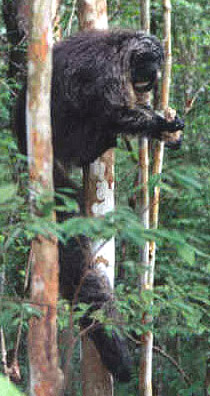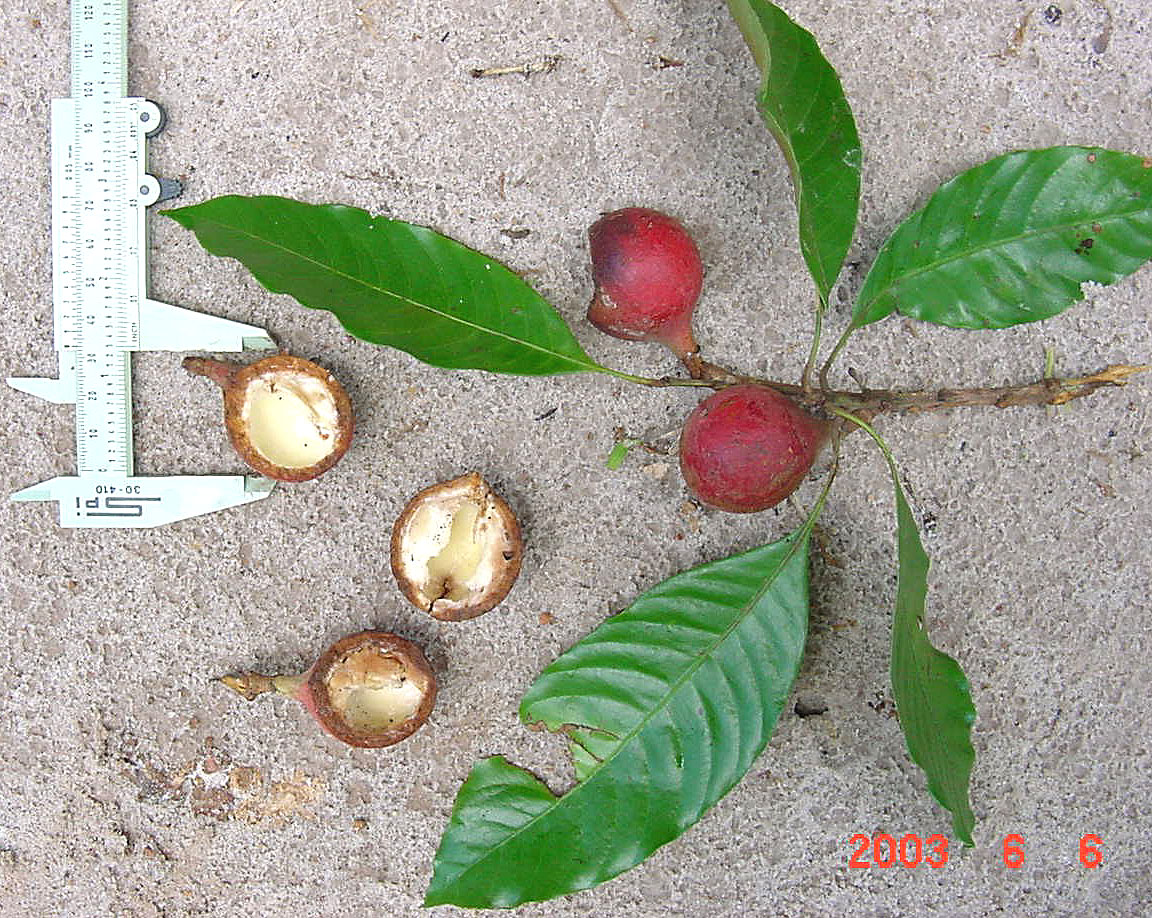 |
Platyrrhine monkeys can be generally classified as fruit-eaters. In some species, the percentage of fruit eaten per month is highly variable and during fruit scarcity, individuals shift to eating other resources (leaves, gums, insects). A few platyrrhines are committed frugivores, defined by an ingestion of fruit as > 60% of the total diet each month. Sakis and uakaris specialize in eating seeds and exhibit dental specializations to open well protected fruit to extract seeds at any stage of maturity. Seasonally, this means that when most platyrrhine frugivores are forced to look for small quantities of ripe fruit or widely dispersed large sources (like figs), sakis can take advantage of large crops of seeds borne in maturing fruit. If there is a seasonal shortage for sakis, it is not the dry season, but rather the transition from wet to dry (in October/November in Venezuela). This is a period of time after which most trees have produced ripe fruit and in the interim between pollination and seed development. Because seeds represent an investment by adult plants, they are often protected chemically or mechanically
against herbivores. Seeds eaten by white-faced sakis are variable, generally low in protein and sugar, but they are consistently high in dietary
fiber and lipids, and variable in condensed tannins. Compared with other frugivores, the average monthly intake of lipids was extremely high (16.1%
by dry matter estimate (DM), attributed to ingestion of young seeds as well as other plant parts that were relatively high in lipids (e.g. seed
arils). Intake of FSS and CP were relatively low (3.4% DM and 6.5% DM, respectively). The average intake of total cell wall or neutral detergent
fiber (NDF = 38.4% DM) was only slightly lower than the range reported for colobine primates. Average intake of tannins was within the range reported
for cercopithecines (condensed tannins of 3.3% Quebracho units standard (QU)). We suggest that white-faced sakis accept a trade-off for food items
that are fibrous or astringent if they are also rich in lipids. Preliminary data suggest that the nutritional profile of bearded sakis is different
from white-faced sakis. |
||

|
|
| C.V. | Lago Guri | Brownsberg Nature Park | White-faced Sakis | Diet | Feeding Competition | |